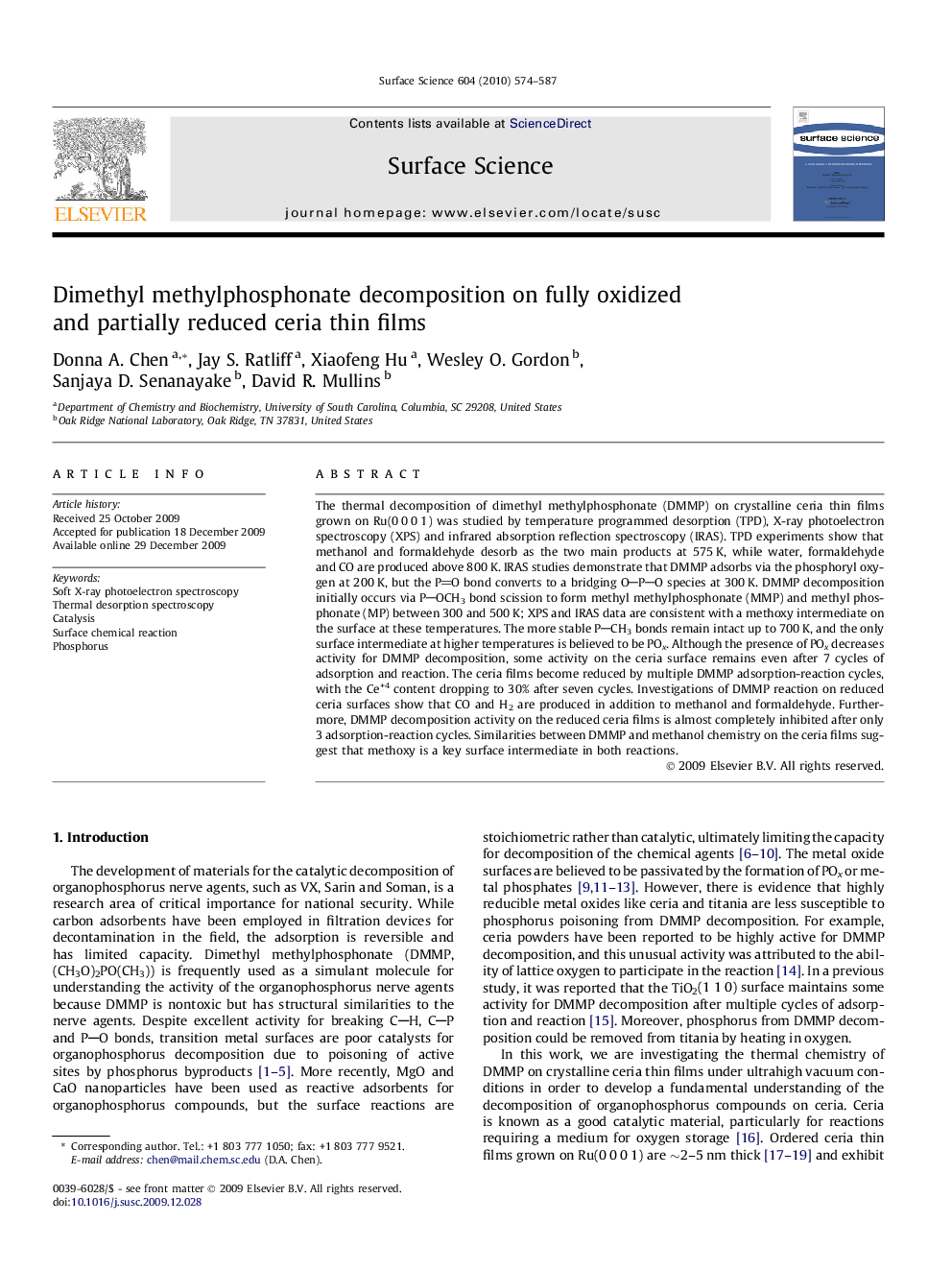| Article ID | Journal | Published Year | Pages | File Type |
|---|---|---|---|---|
| 5423983 | Surface Science | 2010 | 14 Pages |
Abstract
The thermal decomposition of dimethyl methylphosphonate (DMMP) on crystalline ceria thin films grown on Ru(0Â 0Â 0Â 1) was studied by temperature programmed desorption (TPD), X-ray photoelectron spectroscopy (XPS) and infrared absorption reflection spectroscopy (IRAS). TPD experiments show that methanol and formaldehyde desorb as the two main products at 575Â K, while water, formaldehyde and CO are produced above 800Â K. IRAS studies demonstrate that DMMP adsorbs via the phosphoryl oxygen at 200Â K, but the PO bond converts to a bridging OPO species at 300Â K. DMMP decomposition initially occurs via POCH3 bond scission to form methyl methylphosphonate (MMP) and methyl phosphonate (MP) between 300 and 500Â K; XPS and IRAS data are consistent with a methoxy intermediate on the surface at these temperatures. The more stable PCH3 bonds remain intact up to 700Â K, and the only surface intermediate at higher temperatures is believed to be POx. Although the presence of POx decreases activity for DMMP decomposition, some activity on the ceria surface remains even after 7 cycles of adsorption and reaction. The ceria films become reduced by multiple DMMP adsorption-reaction cycles, with the Ce+4 content dropping to 30% after seven cycles. Investigations of DMMP reaction on reduced ceria surfaces show that CO and H2 are produced in addition to methanol and formaldehyde. Furthermore, DMMP decomposition activity on the reduced ceria films is almost completely inhibited after only 3 adsorption-reaction cycles. Similarities between DMMP and methanol chemistry on the ceria films suggest that methoxy is a key surface intermediate in both reactions.
Keywords
Related Topics
Physical Sciences and Engineering
Chemistry
Physical and Theoretical Chemistry
Authors
Donna A. Chen, Jay S. Ratliff, Xiaofeng Hu, Wesley O. Gordon, Sanjaya D. Senanayake, David R. Mullins,
